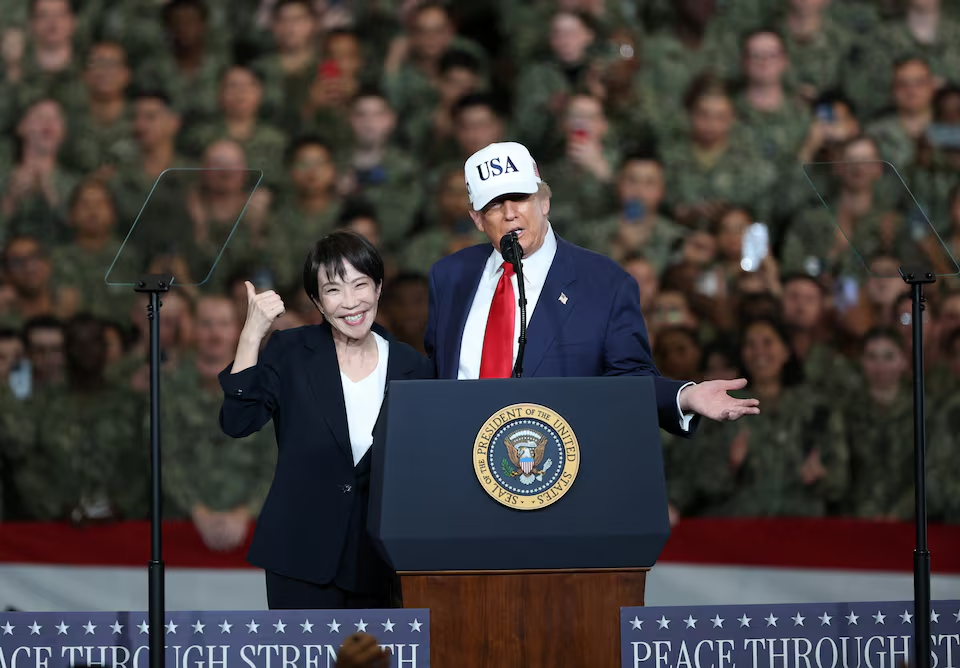TOKYO, 28 October 2025 – In a high-profile meeting in Tokyo, U.S. President Donald Trump engaged with Japan’s newly-appointed Prime Minister Sanae Takaichi, in discussions centring on trade, economic investment, and security cooperation. The encounter underlines deepening U.S.–Japan ties amidst regional realignment and global supply-chain concerns.
Key Highlights
- Trump publicly lauded Takaichi, remarking she would “be one of the great prime ministers,” and congratulated her as Japan’s first female leader.
- The two sides signed a deal enhancing cooperation on critical minerals and rare earth supply chains, part of a broader strategic emphasis on reducing dependency on dominant producers.
- Investment and trade commitments featured prominently: Japanese firms are expected to target large-scale U.S. investments in sectors such as EVs, energy and agriculture, while the U.S. emphasised support for Japan’s defence and export-oriented industry.
- Takaichi symbolically reinforced ties with the U.S. by presenting ceremonial gifts and aligning her agenda with a strong U.S.–Japan alliance narrative, while Trump invoked her predecessor Shinzo Abe’s legacy of U.S.–Japan friendship.
Why It Matters for Asia
From an Asian investment and policy-observer viewpoint, the meeting carries several implications:
- Japan’s leadership transition to Takaichi, paired with the U.S. engagement under Trump, signals possible shifts in Japanese export policy, defence posture, and supply-chain alignment.
- The focus on rare earths and critical minerals dovetails with broader regional efforts (including in ASEAN and Australia) to diversify supplies away from dominant producers and strengthen the Indo-Pacific value chain.
- Corporate and investor attention may pivot toward Japanese firms that stand to gain from deeper U.S. market access and strategic infrastructure themes, particularly in technology, defence, energy and mobility.
- Geopolitically, the meeting underscores Japan’s enhanced strategic role amid rising regional tensions and the recalibration of alliances, which may shift trade flows, investment patterns and regional policy priorities.
What to Watch
- Any finalisation of Japan-U.S. trade commitments or tariff adjustments affecting sectors such as automobiles, electronics or agriculture.
- Signals from both leaders on Japanese defence spending, export controls, and alignment of supply-chain resilience, key for regional ecosystem participants.
- The deal rollout timeline for the critical-minerals agreement: how quickly investments and projects move from announcement to execution.
- Market reactions in Japan, the U.S. and neighbouring Asian economies, particularly in export-sensitive industries or supply-chain-linked sectors.








